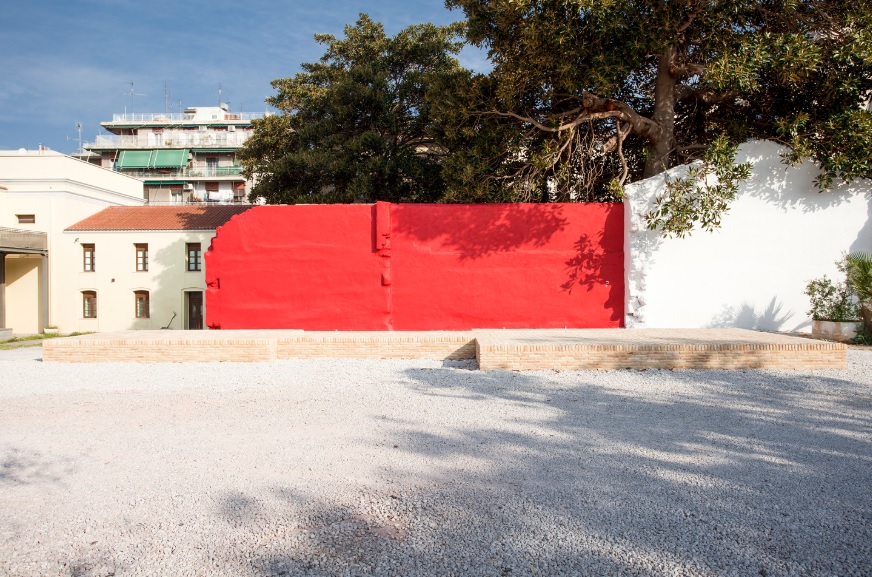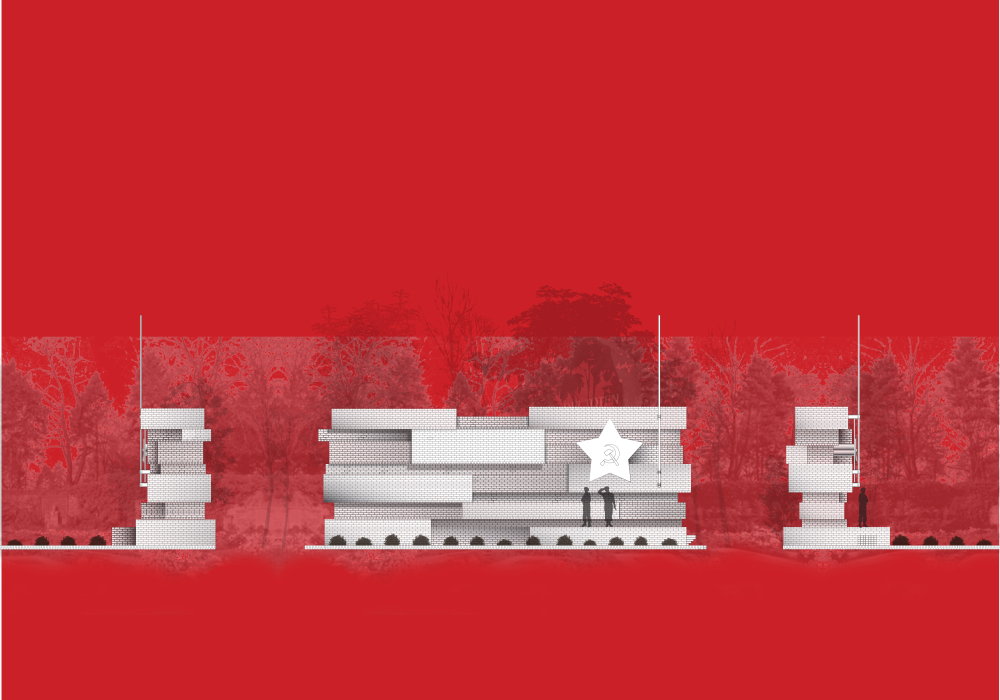Art of the possible: towards an antifascist feminist front
The first part of the Art of The Possible project is a reconstruction by Sanja Iveković of the brutalist Monument to Revolution designed by Ludwig Mies van der Rohe. The monument commemorated not only the revolution, but also Rosa Luxemburg and Karl Liebknecht. It was erected in Berlin in 1926, but unfortunately it did not last even a decade and was destroyed by the Nazis in 1935. Sanja Iveković reconstructed only the monument base. The very attempt at its recreation was intended to remind the public about female revolution leaders who have been obliterated not only from urban space but also from our common memory and history. According to the Croatian artist, in view of the rising fascism and neoliberal capitalist imperialism, the object created by her was meant to become an impulse for the development of new forms of political engagement.
The second and the most important part of the Art of the possible was a collection of sound recordings of women from all over the world and from different walks of life: activists, politicians, critics, artists, poets and feminists. Each of them presents their own vision of international, feminist, anti-fascist front the establishment of which was proposed by Dimitrakaki and Majaca. The document was inspired by a definition of the political practice of Rosa Luxemburg epitomized by the phrase ”art of the possible”:
“Only in this way can our practical struggle become what it must be: the realization of our basic principles in the process of social life and the embodiment of our general principles in practical, everyday action. And only under these conditions do we fight in the sole permissible way for what is at any time ‘possible’.” https://www.marxists.org/archive/luxemburg/1898/09/30.htm [Acessed on 22.12.2018].↩︎.
Inspired by the words of Rosa Luxemburg, the women and the collectives invited to the project treated as „possible” the emergence of an international, anti-fascist, feminist front and recorded short statements on the meaning of fascism to them and on the significance of a feminist protest against fascism in our time.
Contributors include: Mujeres Públicas (activist art collective, Argentina), Elke Krasny (art theorist, Austria), Jaleh Mansoor (art historian, Canada), Cecilia Vicuña (artist, poet, Chile), Vesna Kesić (activist and writer, Croatia), Frederikke Hansen and Tone Olaf Nielsen (CAMP founders, Denmark), Mare Tralla (artist and activist, Estonia/UK), Arahmaiani (artist and activist, Indonesia), Giovanna Zapperi (art historian, Italy/France), Isabell Lorey (political theorist, Germany), Athena Athanasiou (social theorist, Greece), Phoebe Giannisi (poet, Greece), To Mov/The Purple (feminist collective, Greece), The Organization of United African Women (Migrant Women Association, Greece), Larissa Vergou (actress and elected councilor of Athens Municipality, Greece), Universal Jenny (poet, Greece), Dilar Dirik (writer and activist, Kurdish Women’s Movement), Sylvia Marcos (writer and activist, Mexico), Syreny.tv, Ewa Majewska & Aleka Polis (feminist network, Poland), Ana Teixeira Pinto with Alex Martinis Roe (writer and artist, Portugal/Australia/Germany), Gülsün Karamustafa (artist, Turkey), Esther Leslie (political and cultural theorist, UK), International Women’s Strike (USA), The National Women’s Liberation (USA), Kristine Stiles (art historian, USA), Martha Wilson (artist, USA), Bojana Pejić (art historian, Serbia), Shubigi Rao (artist and writer, Singapore), Nuria Enguita Mayo (art historian, Spain), Le Zbor (Feminist Choir, Zagreb), Revolutionary Association of the Women of Afghanistan (RAWA)
The sound file was compiled by the feminist electronic musician and performer AGF (Germany/Finland) and is available here.
The photos of the project come from the website of Documenta 14.
The drawing of the monument’s design comes form the Make Shift website which also includes a description of the Monument to Revolution.

